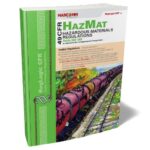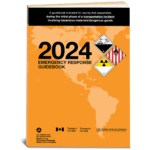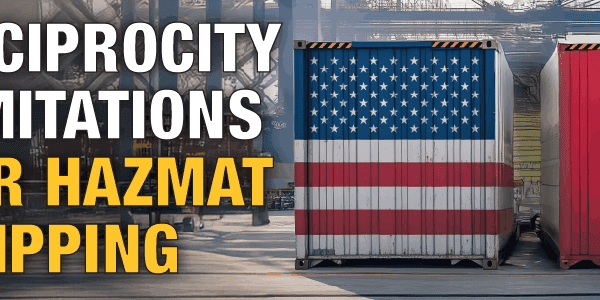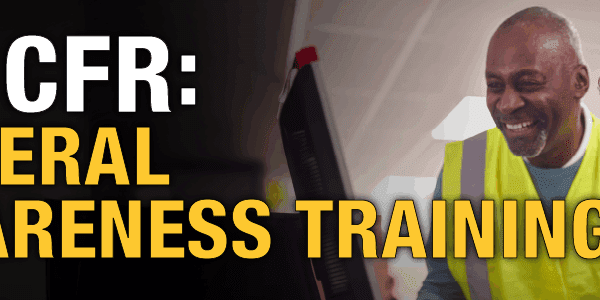
Don’t Get Caught Without One! First Aid Kits as Hazardous Materials
Summer can be a great time for fun in the sun, outdoor sports and exploring nature. Unfortunately, these activities sometimes result in minor injuries that require chemical assistance usually found in first aid kits – flammable sanitizers, toxic disinfectants, alcohol wipes, sprays, even battery-powered thermometers. Many of these are hazardous materials, although obviously their size makes them a low risk. So how do the hazardous materials and dangerous goods regulations deal with them?
First Aid Kits for the Consumer
If you’re a member of the general public you aren’t normally affected by the hazmat regulations, at least when carrying first aid kits for personal use by ground. The following provisions allow you to take your first aid kits with you on your trips to the beach or the mountains without regulatory hassle:
- In the U.S., under the “Hazardous Materials Regulations” of Title 49, Code of Federal Regulations (49 CFR), go to the special provisions found in section 172.102. Special provision 15 states that “Kits that are carried on board transport vehicles for first aid or operating purposes are not subject to the requirements of this subchapter.” Also, 49 CFR is intended to apply to “commercial transport” only, not personal items carried by the general public for their own use.
- In Canada, there are no equivalent special provisions. However, consumers can use two exemptions that would apply. First, “Transportation of Dangerous Goods Regulations” (TDGR) section 1.15 allows consumers to carry up to 150 kilograms of dangerous goods purchased at retail outlets, where most of these kits will be purchased. Also, section 1.27 allows you to carry “dangerous goods on a means of transport that are required for … the safety of individuals on board the means of transport.”
- Under the IATA Dangerous Goods Regulations (DGR) for air transport, first aid kits aren’t directly mentioned as something a passenger can bring on board without treating it as dangerous goods. However, under section 2.3, it does allow passengers and crew to bring aboard “non-radioactive medicinal or toiletry articles,” as long as the total quantity doesn’t exceed 2 kilograms or 2 Litres, and the net quantity of each article does not exceed 0.5 kilograms or 0.5 Litres. A small personal first aid kit would likely qualify under these provisions. Such items may be taken as carry-ons (assuming any liquids meet the appropriate security size limits) or be shipped as checked baggage.
What about Commercial Shipments?
Of course, for consumers to purchase these kits, their suppliers must ship them as commercial goods, and the above provisions wouldn’t apply. There are options, of course, that can make commercial shipment easier, such as:
1. Limited and excepted quantities
The standard small quantity exceptions found in 49 CFR and TDGR can be used for ground shipment of first aid kits. Kits would only have to be verified to be within the appropriate size limit for the appropriate exception. For excepted quantities, this limits inner containers to not more than 30 millilitres or grams, while limited quantities can usually be in the range of 1 to 5 Litres or kilograms per inner container, with a maximum of 30 kilograms gross per package. Most first aid kits would fall into these ranges easily. Hazard communication for ground transport of these products would be the limited quantity or excepted quantity mark, as applicable.
Additionally, under 49 CFR, the section dealing with packaging of first aid kits, section 173.161, provides relief from many of the requirements of the “Hazardous Materials Regulations” even for first aid kits not shipped as a limited or excepted quantity.
2. UN3316, First aid kits by air shipment
Air shipments of mixed packages of different classes of dangerous goods as found in first aid kits are more complicated. Not only would the package be required to display all hazard class labels and related information for each type of dangerous goods it contains, but there is a calculation called the “Q” value that must be established to ensure that the package doesn’t exceed the strict quantity limits set by the IATA DGR.
The solution is to use the UN number UN3166, First aid kits, which lumps all of the different types of hazardous materials (flammable liquids, aerosols, toxic substances and so forth) into one shipping description assigned to Class 9, Miscellaneous Dangerous Goods. This eliminates the need for multiple shipping marks and labels, as well as the requirement to calculate the Q value.
For shipment as air limited quantities, first aid kits can use packing instruction Y960. This limits inner containers to not more than 30 millilitres of liquid or 100 grams of solid each, with a total allowed of 1.0 kilograms per package. In this case, outer packaging does not have to be UN specification, but the package would have to be marked as class 9 dangerous goods and a Shipper’s Declaration for Dangerous Goods must be completed.
For shipment as regular dangerous goods, the inner packagings of dangerous goods can be up to 250 millilitres or grams each, with a total of not more than 1.0 Litres or kilograms of contents per kit. You may have more than one kit per outer box, but the total net quantity cannot exceed 10 kilograms. The outer packaging under this instruction must be UN specification.
Conclusion
First aid kits are an essential part of safety for consumers as well as workplaces. Fortunately, the various regulations on transporting hazardous materials makes them easier to ship than most other hazmat.
Do you have questions regarding shipping first aid kits or chemical kits? Our team of experts is just a call away for our customers at 855.734.5469 or send us an email, we’re happy to help.
Stay up to date and sign up for our newsletter!
We have all the products, services, and training you need to ensure your staff is properly trained and informed.
 49 CFR Publications 49 CFR Publications |
 GHS within OSHA GHS within OSHA |
 ERG Publications ERG Publications |
References:
International Air Transport Association, IATA Dangerous Goods Regulations, 66th Edition
U.S. Department of Transportation, “Hazardous Materials Regulations,” Title 49 of the Code of Federal Regulations
Transport Canada, “Transportation of Dangerous Goods Regulations”
Mayo Clinic Staff, “First-aid kits: Stock supplies that can save lives”






 ICC USA
ICC USA ICC Canada
ICC Canada